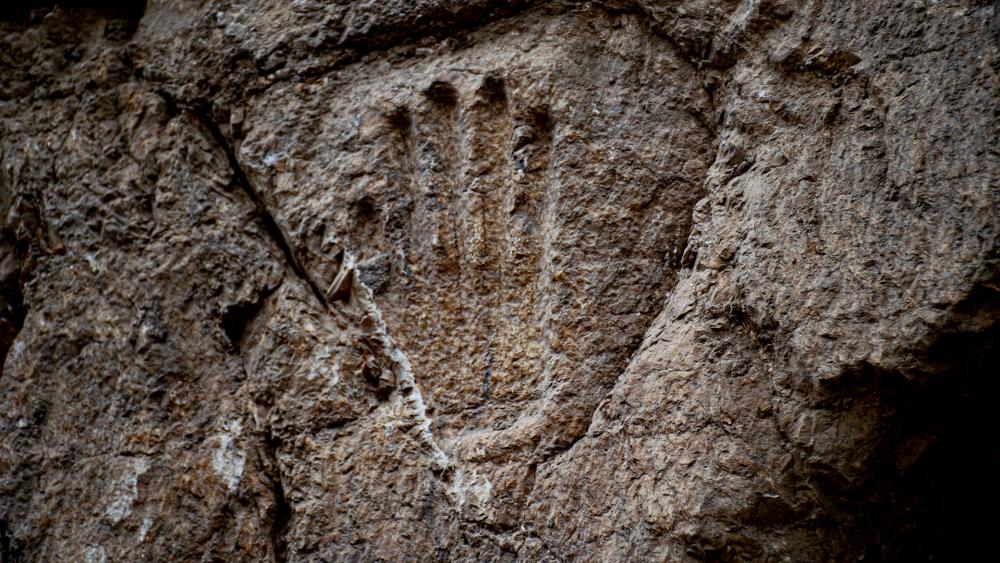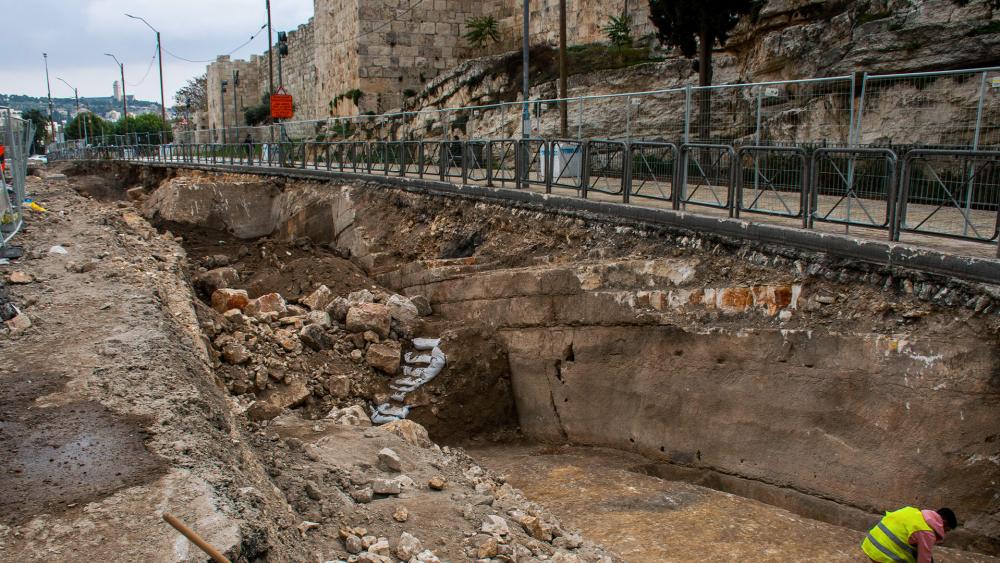JERUSALEM, Israel – The Israeli Antiquities Authority (IAA) has uncovered a moat outside the walls of Jerusalem's Old City dating back at least 1,000 years. The moat was dug out of the rock surrounding the city. At one place on the moat's wall was an unusual carved imprint of a hand.
Archaeologists were excavating along Sultan Suleiman Street, one of the busiest avenues in eastern Jerusalem, when Zubair Adawi, the IAA's excavation director, discovered the moat underneath the street.
"People are not aware that this busy street is built directly over a huge moat, an enormous rock-hewn channel, at least (33 feet) wide and between (6.5 and 23 feet) deep," Adawi said. "The moat surrounding the gates of the Old City, dates back about 1,000 years to the 10 century (AD) or earlier, and its function was to prevent the enemy from besieging Jerusalem from approaching the walls and breaking into the city," he added.
Adawi explained that water-filled moats are plentiful in European castles and fortifications, "but this moat was dry, its width and depth presenting an obstacle slowing down the attacking army."

Interestingly, the beautiful walls currently circling the Old City, built by the Ottoman Turkish Sultan Suleiman the Magnificent in the 16th century, are not as sturdy as the the older protections for the city in the Middle Ages, during the time of the Crusades. Dr. Amit Re'em, the IAA's Jerusalem regional director, noted, "The earlier fortification walls that surrounded the ancient city of Jerusalem were much stronger."
Re'em explained, "In the era of knights' battles, swords, arrows, and charging cavalry, the fortifications of Jerusalem were formidable and complex, comprising walls and elements to hold off large armies storming the city." He continued, "Armies trying to capture the city in the Middle Ages, had to cross the deep moat and behind it two additional thick fortification walls, whilst the defenders of the city on the walls rained down on them fire and sulfur."
 As to the mysterious handprint carved into the moat's wall, archaeologists aren't sure of its meaning. "Does it symbolize something? does it point to a specific nearby element? Or is it just a local prank?" The researchers say, "Time may tell."
As to the mysterious handprint carved into the moat's wall, archaeologists aren't sure of its meaning. "Does it symbolize something? does it point to a specific nearby element? Or is it just a local prank?" The researchers say, "Time may tell."
IAA Director Eli Escuzido said in a statement, "Many dreamed about and fought for Jerusalem, and the city fortifications are a silent testimony. The archaeological finds enable us to visualize the dramatic events and the upheavals that the city underwent. One can really imagine the tumult and almost smell the battle smoke. We are daily unraveling the intensive military history of the city, and we will make great efforts to exhibit the finds to the general public.
***Please sign up for CBN Newsletters and download the CBN News app to ensure you keep receiving the latest news from a distinctly Christian perspective.***
Did you know?
God is everywhere—even in the news. That’s why we view every news story through the lens of faith. We are committed to delivering quality independent Christian journalism you can trust. But it takes a lot of hard work, time, and money to do what we do. Help us continue to be a voice for truth in the media by supporting CBN News for as little as $1.












 Support CBN News
Support CBN News







